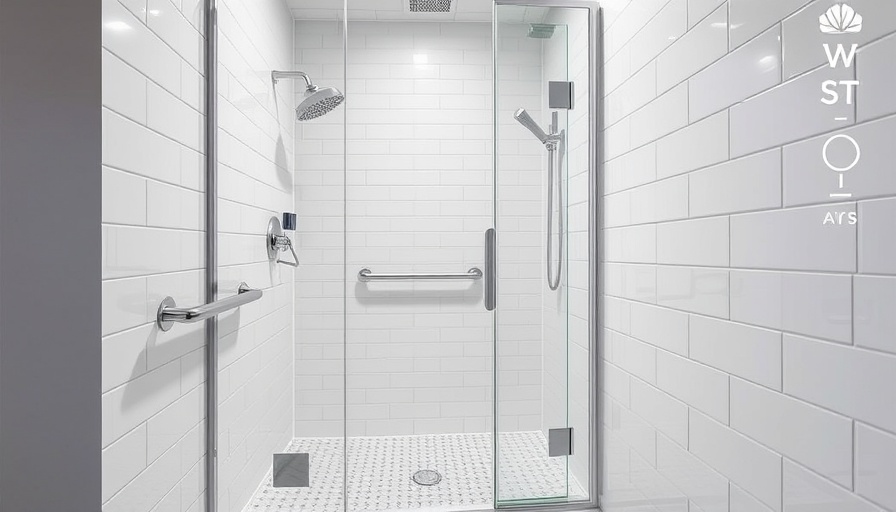
Understanding the Risks of Walk-In Showers for Seniors
As the population ages, the importance of creating safe bathing environments for seniors has never been more critical. Walk-in showers are increasingly becoming the preferred bathing option for older adults due to their ease of access, but they come with specific risks that must be addressed. At the forefront is the potential for slips and falls, which can lead to serious injuries. Recognizing these risks is the first step in making necessary modifications that ensure safety and enhance independence for seniors.
Evaluating Your Walk-In Shower: Safety First
Before jumping into modifications, a thorough assessment of your walk-in shower environment is essential. Begin with the flooring; opt for slip-resistant materials like textured tiles or vinyl that provide stability. Smooth surfaces can be deceptive, leading to unexpected falls every day. Also, look at the shower's layout — it should promote safe movement. Clear out any decorations or items that could cause tripping hazards, as a spacious and uncluttered area is vital for safety.
The Importance of Temperature Control in Preventing Accidents
Temperature control in walk-in showers holds a significant place in ensuring the safety of seniors. Recognizing that seniors are particularly sensitive to temperature fluctuations, installing anti-scald devices and thermostatic mixing valves can prevent potential burns due to sudden water temperature changes. Furthermore, advocating for the use of handheld showerheads allows seniors to test water temperature before stepping in, minimizing risks.
A shower timer can additionally be a game-changer. By acting as a gentle reminder to limit shower time, it guards against the dangers of overspending too long in the shower, which often leads to accidents. These combined safety features create a holistic approach to shower safety, giving seniors the peace of mind they deserve during their bathing routines.
Key Safety Equipment That Every Senior Should Consider
Using the right safety equipment can transform a walk-in shower from a potential hazard to a safe haven. Grab bars are a must-have addition, acting as an important anchor point for seniors entering and exiting the shower. The placement of these bars is crucial; they should be positioned prominently near the entrance and within the shower space for maximum utility. Additionally, it is essential that these grab bars are securely installed to handle significant weight, providing the confidence seniors need while bathing.
Incorporating a shower bench is another beneficial modification. A shower bench allows seniors to sit comfortably while showering, taking the strain off their legs and minimizing the risk of falling. This simple addition can markedly improve the bathing experience, allowing for greater independence.
Additional Resources and Supports for Caregivers
For caregivers, understanding the intricacies of modifying one’s shower to enhance safety is vital. There are countless resources available for caregivers seeking guidance. Online platforms and local support groups offer advice on the best products and practices for home modifications tailored for seniors. Investing time into education about bathroom safety not only protects seniors but also gives caregivers peace of mind.
Future Trends in Walk-In Shower Safety
As the demand for accessible bathing solutions continues to rise, we anticipate innovative designs and technologies emerging that will further enhance shower safety for seniors. Future possibilities include integrated non-slip materials, advanced temperature control systems, and waterproof smart home features that provide real-time feedback on safety risks. Staying informed about these advancements will empower caregivers and seniors to make informed decisions about their safety.
Conclusion: Empowering Seniors Through Safety
Enhancing safety in walk-in showers is not merely about preventing accidents; it’s about fostering independence and dignity for seniors. By prioritizing safety measures like assessing the shower environment, installing appropriate equipment, and leveraging technology, we can create a sanctuary where seniors can enjoy their bathing experience without fear. Whether you’re a caregiver or a senior looking to improve your bathing environment, the journey to safety can significantly enrich your experience.
If you're interested in more tips on creating safer living environments for seniors, explore our caregiver resources for detailed guides and product recommendations that cater specifically to your needs.
 Add Row
Add Row  Add
Add 




Write A Comment